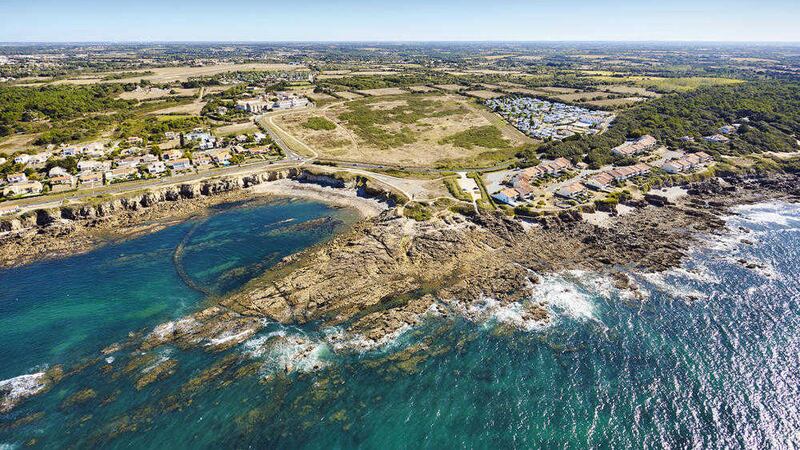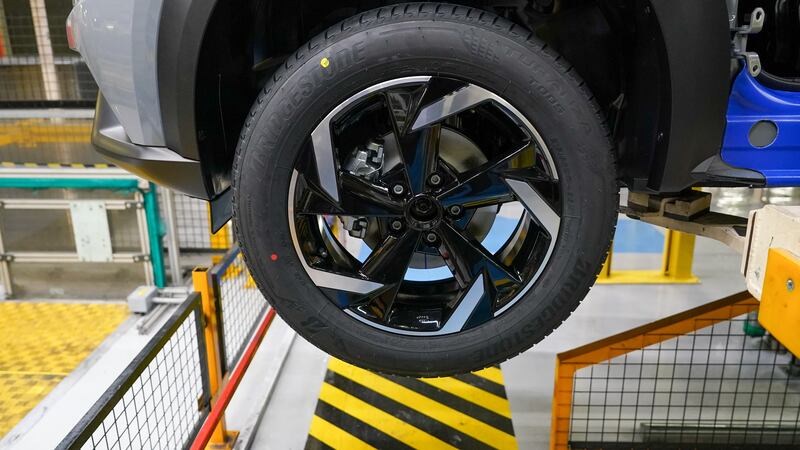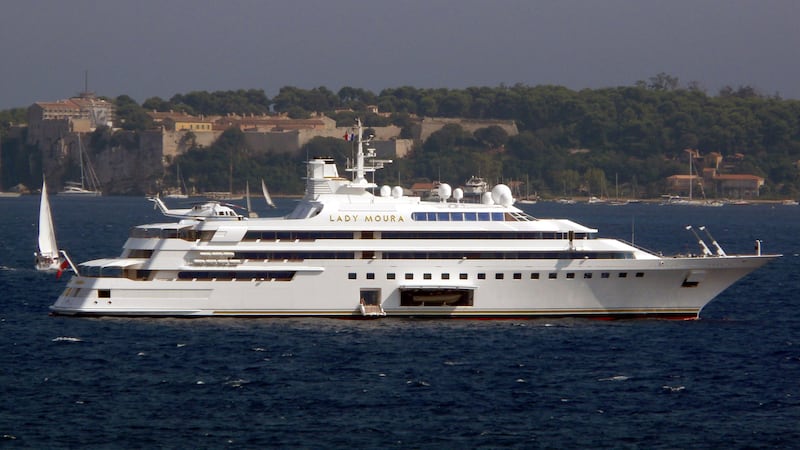HALFWAY down the French Atlantic coast in the southeast corner of the Vendée lies one of the largest wetlands in France.
The Marais Poitevin is a marshland that shelters a diversity of wildlife and is a place where nature runs free.
For more than 40 years this maze of waterways – known as the Green Venice or 'Venise Verte' – has been a conservation area where marshlanders silently glide their flat-bottomed boats.
Locals once depended on this traditional means of transport: Children were taken to school by boat, milk was delivered by it and the watercourses were the lifeblood of the community.
Although this is no longer the case, the Marais wetlands has become popular for those wishing to explore the area and walk or cycle its quiet pathways.
Many small harbours lie at the end of village streets and some are still used for guiding trips.
One of the starting points for boat journeys is from the jetty at the abbey of Saint-Pierre of Maillezais, just south of the town of Fontenay-le-Comte.
From here you step on board a 10ft long black fibreglass boat. Guides slowly punt you along using a Pigouille, a long ash pole – the Vendée version of a paddle – with an iron fork at the end.
The two-hour tour circles a labyrinth of luxuriant tree-lined canals bordered by a pastoral landscape of meadows. With our guide, Damien Chauveau, we glide into a secret world bristling with wildlife that the tourism marketing gurus call a Grand Site of France.
Damien has spent five years learning the routes, navigating the narrow channels and negotiating obstacle courses of low bridges and large overhanging branches.
He points out two fat coypu lurking shyly in the vegetation: beavers, imported from South America for their fur. They spend their days munching on the grass and, because they are camouflaged by greenery, are hard to see.
Otters also frequent the Marais, but are mostly nocturnal. Grey herons, standing in the shallows, are easier to spot, while moorhens and swans add to the watery bestiary.
Some sections are in dappled shade until we turn a corner into a brighter world where damselflies and dragonflies skim the surface.
Hedges are decorated with flora that includes creeping jenny, meadow rue, hemlock and loosestrife. We pass flag iris and shimmering blankets of duckweed, while the mud banks are colonised by cordgrass which often remains underwater for a long time.
Ancient trees with large girths line the banks. Poplar, willow and ash are common but there are also cedars and 200-year-old sequoia trees.
Branches from some of these multi-limbed giants form evocative tunnels across canals, producing an ethereal quality redolent of Tolkien’s Middle-earth.
The Marais is in a remote part of the Vendée and a timeless world of soothing tranquillity – but it is only one corner of the region.
About 90 minutes’ drive from this otherworldly web of waterways through fertile farmland and fields of maize is the Cote de Lumière (Coast of Light).
Here, the contrast of the bustling resort of Les Sables d’Olonne offers a completely different holiday experience: somewhere to sample activities or relax while drinking in the Atlantic air along with a cafe crème.
Although unashamedly a tourist town, Les Sables has many sides. It is a working fishing port with more than 80 fishermen trawling for sole, cuttlefish and hake. The fish market, built with iron and glass in the style of the Eiffel tower, offers an astonishing range of lobster, langoustine, mussels, sardines, oysters and shrimps.
A sea of masts greets you at the marina at Port Plaisance (Pleasure port) where more than 1,500 boats are moored. Traditional 1960s wooden sailing boats sit hugger-mugger with yachts, motor boats and the occasional luxury catamaran, testifying to its reputation as a fashionable resort.
It is currently a hive of activity, as Les Sables is preparing to launch the eighth Vendée Globe – the only non-stop round-the-world solo race without assistance. Due to set sail on November 6 when it will attract tens of thousands of visitors to the town.
A bike ride to the north of Les Sables is an excellent way of exploring the coast. La Vendée a Vélo is made up of a series of trails along the rocky indented coastline and through different types of terrain.
It is part of the wider La Vélodyssée that runs down the entire French Atlantic coast from Brittany to the Spanish border.
The French love their bikes, and most of the signposted routes are along designated car-free cycle lanes. On our ride, we pass beaches, sand dunes and salt marches, cycle through quiet pastureland, fragrant shady forests and alongside empty canals.
Catch the right day with the Atlantic sparkling and glittering and you will appreciate why it is known as the Coast of Light.
One of the new coastal activities, the Longe cote (Long coast), is a form of power walking through the sea. This version of aqua aerobics is suitable for anyone over 15 and involves walking waist high through the waves for 3km along the full length of the beach with arms swinging.
Now a popular form of coastal recreation, it is said to work wonders for your circulation as well as helping improve balance and strengthening muscles.
The Vendée is a place that appeals to families and offers a host of activities, ranging from pedal go-karting and segway trips to roller-blading and skating.
A popular excursion from Les Sables is to Puy du Foy, an award-winning theme park an hour’s drive north.
One of France’s biggest attractions, it draws crowds of over two million throughout the spring and summer who come to watch spectacular historical shows, many with special effects and a revolving stage.
The new show for 2016, Le Dernier Panache (The Last Plume) follows the fortunes of a French naval officer seeking freedom in America in 1793.
Some of the fun events for children at the park include the Jumping Jets and the Animal Labyrinth.
Apart from a range of hotels, gites and B&Bs, the area around Les Sables d’Olonne is noted for its high quality campsites, most with swimming pools. Many of these are along the coast and some have a five-star rating.
Spend a few days or a week here, and you will see why the Vendée has been voted one of the top three most visited holiday regions in France, a place where many return to each year.
- Paul Clements is the author of Wandering Ireland’s Wild Atlantic Way, published by Collins Press. He will discuss his travels on Friday September 9 at the Benedict Kiely weekend (Benedictkiely.info), Strule Arts Centre, Omagh.
Fact Box
Getting there:
Operated by Irish Ferries, the Oscar Wilde connects Rosslare with Roscoff in Brittany, a four-hour drive from the Vendée. Air conditioned cabins range from two-star to luxury. Prices vary by season, check Irish Ferries for special deals. Early booking is recommended Irishferries.com
Eating / Sleeping in Marais Poiteven and Les Sables d’Olonne:
Hotel Le Rabelais, 19 rue de l’Ouilette, Fontenay-le-Comte. Convenient for exploring the Marias Pointevin. Le-rabelais.com
Hotel Le Calme Des Pins, 43 Avenue Aristide Briand, 85100, Les Sables d’Olonne, Calmedespins.com
Restaurant L’Oree des Pins, 20 Avenue Rhin et Danube, 85100, Les Sables d’Olonne, Loreedespins.fr
La Cabane D’Arthur, Plage de Tanchet, Les Sables d’Olonne
Visitor attractions:
Puy du Foy theme park. Special offers include a stay of one night and a show. Puydufou.com
Bike ride in the Marais Poitevin: Bicyclette-verte.com
Car rental, Enterprise Rent-a-car, 13 rue de Cornulier, 44000, Nantes
Useful French tourism websites:
Vendee-tourisme.co.uk
Visitlessablesdolonne.co.uk
France.fr



